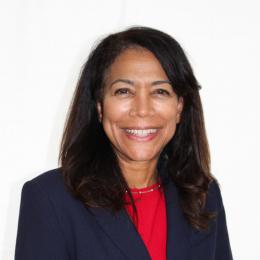Banner artwork by Michael D Brown / Shutterstock.com
Traditionally, leaders have been measured by how effective they are at decision-making, strategizing for the future, or stepping up to the plate in tough situations. The focus is often on execution alone — what a leader and their team can accomplish. While these leadership abilities are still important (and expected), they are no longer enough to keep organizations relevant or competitive and workforces engaged and thriving. Only focusing on the “what” of leadership can prove to be short-sighted. Instead, the new focus is shifting to the “how.” The new measure of leadership is the impact and influence leaders have on others — their ability to empower their teams and to help their teams realize their individual potential and power.

But how do we put ourselves in a position where we can get close to others so our impact is magnified? You build trust. Frances X. Frei and Anne Morriss recently wrote in Harvard Business Review.
The authors identified three core drivers of trust — authenticity (the degree which your team can experience the real you), logic (the degree which your team knows your judgment is sound), and empathy (the degree which your team believes you care about them and their success). If any of these elements are lacking, trust in a leader can quickly erode.
But how do we put ourselves in a position where we can get close to others so our impact is magnified? You build trust.
While most leaders likely view themselves as logical, many will be first to admit that being authentic or empathetic are not their strong traits. For many, in fact, establishing and maintaining authenticity and empathy may seem like unsurmountable tasks. These beliefs can be overcome, however, if leaders start developing as inclusive leaders.

What is inclusive leadership?
In 2016, Deloitte pronounced inclusive leadership as the new way of leading teams. Seven years later, especially after a global pandemic and resulting shifts in cultural views of work, we submit to you that inclusive leadership is the way of leading in 2023.
At its core, inclusive leadership is about:
(1) Seeing each member of the team as distinctive individuals, valuing their uniqueness, accepting them into the team as they are, and pouring into each individual’s growth and success;
(2) Digging deeper into who you are as a person, a professional, and a leader — your story, the narratives that have shaped you, your insecurities and struggles, your biases, and your motivations for change; and
(3) Capitalizing on the diverse backgrounds, perspectives, ideas, and viewpoints of individuals on the team to help ensure richer ideation and more encompassing decision-making.

Developing inclusive leaders — who can keep current workforce engaged and help create thriving work environments — should be a priority for every organization that wants to be competitive in current markets for talent and customers. Developing inclusive leaders is a lengthy and committed process, requiring deep exploration of personal values, an honest look at personal biases, a willingness to be vulnerable and humble, and an openness to alternative viewpoints. However, the rewards can be substantial — for leaders, their teams, and the organization overall.
Developing inclusive leaders — who can keep current workforce engaged and help create thriving work environments — should be a priority for every organization that wants to be competitive in current markets for talent and customers.
Although the idea of developing inclusive leaders may seem like a daunting task, here are some simple steps organizations can take to start on this journey.
Start the conversation to pique their curiosity
Being an inclusive leader starts with having an open mind and healthy, respectful curiosity about others and their experiences and perspectives. Human nature is to view the world through our own lens, which reflects our own background, values, experiences, and preferences. It’s no secret, of course, that there are as many “lenses” as people. Each individual is unique. Inclusive leaders are like good world travelers — curious about people and places that are different from what they are used to. They are open to learning about and experiencing different perspectives and cultures. They appreciate the uniqueness of other people.

Being an inclusive leader starts with having an open mind and healthy, respectful curiosity about others and their experiences and perspectives.
Good news: we don’t have to travel far to experience rich diversity. It’s right here — in our own workplaces. To develop inclusive leaders (and encourage inclusion and belonging in the workplace), organizations should consider creating opportunities for employees to share their backgrounds and experiences.
Organizations should consider creating opportunities for employees to share their backgrounds and experiences.
Whether in round tables, through mentorship opportunities, or in settings facilitated by employee resource groups — employees can discuss their cultures, upbringing, experiences, and anything else that makes them who they are. All people leaders should be engaged in these discussions – actively listening and showing interest in learning about others.

Interestingly, these conversations often reveal many similarities among the participants, showing while we are different, we are also similar in many ways. When executed with intention and consideration, these sharing opportunities can lead to greater understanding of different perspectives, or — at least — to openness to learn more.
If having your own employees share their personal experiences is not feasible, consider bringing in external speakers from the community. Make it mandatory for your leadership to attend and encourage their teams to do the same. Bonus if the speakers offer an interactive aspect to their talks — tabletop exercises, self-reflection journaling, or guided discussions. Keep it light and engaging, but do create opportunities for deep reflection.
Focus on self-awareness
Self-awareness is undoubtedly important to being a good leader, but it is absolutely critical to being an inclusive leader. Being self-aware is essential in helping us acknowledge our unconscious biases, but it is not easy to be brutally honest with ourselves and humble enough to see where we’ve come up short.
Self-awareness is undoubtedly important to being a good leader, but it is absolutely critical to being an inclusive leader.
This is where conversations/assistance from professionals in this space can be helpful. For example, organizations can offer their leaders training on overcoming unconscious bias to help them become aware of its presence, understand how it affects them and their teams, and implement changes to counteract bias.

There are a plethora of trainings and resources for individual assessments like StrengthsFinder 2.0 from Gallup or Red Bull Wingfinder. In addition, professional and/or executive coaching can be helpful to leaders who need a little extra help with practicing self-awareness. Another option is to pair up more mature inclusive leaders in your workplace with those who are just starting out on this journey for one-on-one mentorship.
Capture their commitment
Being inclusive is not always easy, and it does not come naturally for many. Conventionally, we tend to be more focused on ourselves and our success. So, how do you encourage/motivate someone to shift their focus to others and be inclusive of others?
The easiest way is to show them “what’s in it for them” and why they should care. Organizationally, the business case for diversity, inclusion, and belonging is undisputed. In fact, we’ve been discussing it for years. There needs to be another, more personal/intimate/selfish layer.
In Deloitte’s research, an individual’s “personal why” is alignment with personal values and a deep-seated sense of fairness. Interestingly, think tank Catalyst captured that the sense of fairness often comes from personal experiences with exclusion, like being in the out-group at school.
Focusing on both the business case and the personal why, encourage your leaders to verbalize or write down their commitments to inclusive leadership. Start with your top leadership, allowing them to lead the way and model this type of a commitment to mid-level leadership. But ensure that the cascade happens because front-line supervisors have a lot of influence on company culture.

Elevate their cultural intelligence
According to the Cultural Intelligence Center (CQC), cultural intelligence (or CQ, a trademark of the CQC) is the capability to function and relate effectively in culturally diverse situations. As our workplaces are becoming more multicultural, it is imperative to develop culturally intelligent leaders.
As our workplaces are becoming more multicultural, it is imperative to develop culturally intelligent leaders.
This starts by assessing the status quo in your organization and then employing tools and training that can elevate your leaders’ CQ. For more on the importance of cultural intelligence and ways to up your leaders’ CQ, see our article “The Forgotten Piece of DEI: Cultural Intelligence.”
Make inclusive language your standard
Are you mindful about the language your organization uses when communicating to your employees and leadership? Are your job postings, policies, email communications, and business updates using inclusive language?
Inclusive language – the opposite of exclusive language – promotes belonging and encourages authenticity at work. Research shows that the use of exclusionary language is harmful and reinforces inaccurate stereotypes and assumptions (How to Make Your Organization’s Language More Inclusive (hbr.org)). Shockingly, exclusionary terms are still commonplace, making it that much more imperative to be intentional with the language the organization and its leaders model. Where to start?
Use inclusive pronouns, replace gender-biased terms (e.g., “chairman”, “guys”, or “man hours”) with gender-neutral alternatives, and eliminate language that excludes or disparages groups of people (e.g., “blacklisted,” “brown bag sessions,” “tribe,” “native English speaker,” “sanity check,” or “blind spot”) in all written and digital communication and leader speeches. It may also be useful to provide tools to your leadership to help them understand how some terms and slang can be offensive to or exclusionary of some groups and guide them to more inclusive choices.
Cover developmental gaps and measure success
When it’s time to get past the conversations, discoveries, and informal assessment tools, consider formally assessing how your top leaders embody inclusive leadership and commitment to developing inclusive leaders on their teams. Where gaps are identified, look at creating development plans. These plans can include training, inclusive leadership coaching, traditional and reverse mentorship, global mobility assignments, or executive leadership with employee resource groups. For an extra boost — and because what gets measured gets done, you can establish Key Performance Indicators (KPIs) for inclusive behaviors and commitment to diversity, equity, inclusion, and belonging (DEIB) and attach compensation incentives to those KPIs.
While the concept of inclusive leadership itself is not new, we may be at a time where the concept has changed from a “nice to have” to a “must have,” at least if your company wants to stay competitive. Inclusive leaders at all levels are essential to the vitality and growth of the organization. Inclusive leaders inspire trust in their teams and create lasting impact on others. Get ahead in this space before you get behind.
Disclaimer: The information in any resource in this website should not be construed as legal advice or as a legal opinion on specific facts, and should not be considered representing the views of its authors, its sponsors, and/or ACC. These resources are not intended as a definitive statement on the subject addressed. Rather, they are intended to serve as a tool providing practical guidance and references for the busy in-house practitioner and other readers.








